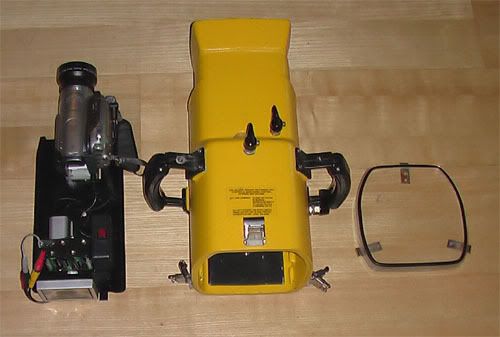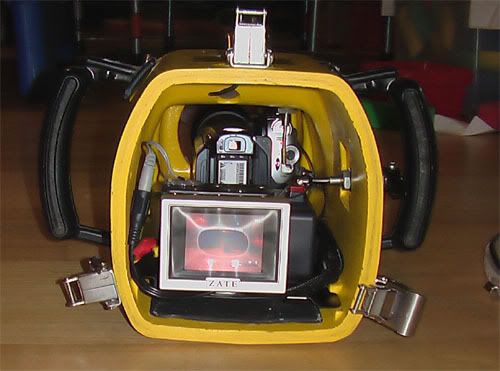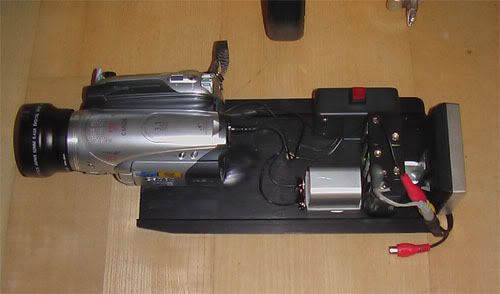DaFireMedic
Contributor
As I have mentioned before in these forums, I am new to underwater videography, and I wanted to make sure that I enjoy it enough to stick with it before dropping several thousand dollars on a new housing and accessories. Others have posted inquiring about how to get started on a budget, so here is my budget housing setup to allow me to “get my feet wet” in underwater videography. Maybe it will give others some ideas. I already had a Canon HV20 high def camcorder (not really "budget", but any camcorder could be adapted). Total cost, not including the HV20 was less than $150 and I have controls for power on/off, start/stop record, and menu access for manual white balance. As I have mentioned before, I have no zoom capability at this time.

Used Hypertech housing (I believe it was made for a Hi-8 camcorder) from Ebay - $79
Zate 2.5" monitor - $51

Because the camcorder goes into stand by mode shortly after turning it on, I wanted a power on/off switch. Being that the HV20 has a dial type power switch, I couldn’t modify a way to turn the switch while the camcorder was inside the housing. I rigged the battery to be mounted externally from the camcorder so that I could wire a push button on/off switch in line with the camcorder. To turn the camcorder on and off, I leave the camcorder dial switch in the “on” position, so when I turn the side control knob it pushes the switch, sending or cutting power to the camcorder.


My initial tests in the pool have been very successful, not a drop of water and the controls work great. It is almost right on neutral buoyancy in the pool, so it should be a hair positive in the ocean. Unfortunately, due to my schedule, it will be at least a month before I can get it down to the beach for a test run in the ocean. I will do at least one dive without the camcorder, just to be sure, but I don’t anticipate that it will leak at depth as the increased pressure on the rear plate should increase the seal.
Any comments or suggestions to improve it would be greatly appreciated.
I posted in the DIY forum with more technical information
Here

Used Hypertech housing (I believe it was made for a Hi-8 camcorder) from Ebay - $79
Zate 2.5" monitor - $51

Because the camcorder goes into stand by mode shortly after turning it on, I wanted a power on/off switch. Being that the HV20 has a dial type power switch, I couldn’t modify a way to turn the switch while the camcorder was inside the housing. I rigged the battery to be mounted externally from the camcorder so that I could wire a push button on/off switch in line with the camcorder. To turn the camcorder on and off, I leave the camcorder dial switch in the “on” position, so when I turn the side control knob it pushes the switch, sending or cutting power to the camcorder.


My initial tests in the pool have been very successful, not a drop of water and the controls work great. It is almost right on neutral buoyancy in the pool, so it should be a hair positive in the ocean. Unfortunately, due to my schedule, it will be at least a month before I can get it down to the beach for a test run in the ocean. I will do at least one dive without the camcorder, just to be sure, but I don’t anticipate that it will leak at depth as the increased pressure on the rear plate should increase the seal.
Any comments or suggestions to improve it would be greatly appreciated.
I posted in the DIY forum with more technical information
Here




